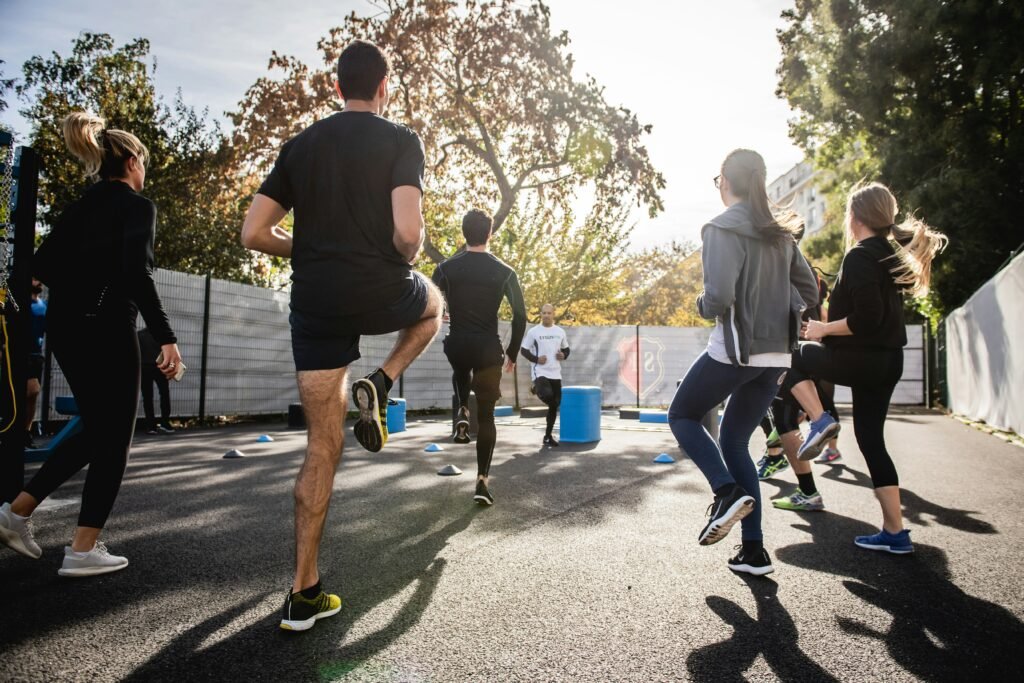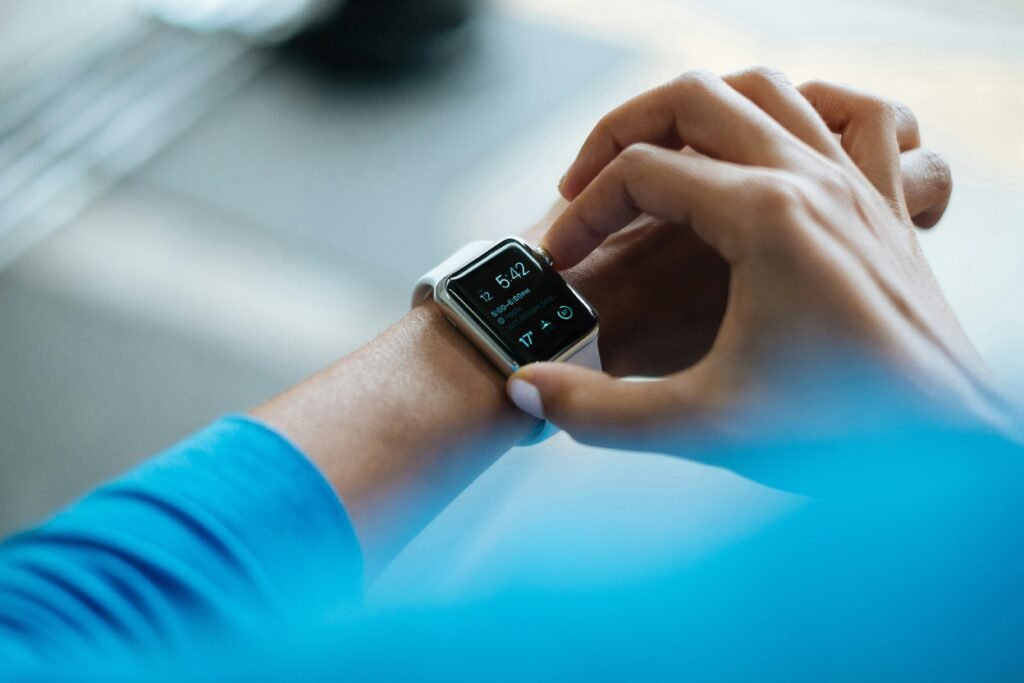
You’ve been hitting the gym regularly, following a strict diet, and pushing yourself to the limit, but lately, you’ve noticed that your progress seems to have come to a screeching halt. It’s frustrating. Welcome to the world of fitness plateaus, where your body adapts to your routine and refuses to budge any further. But don’t lose hope just yet! In this article, we’ll explore the secrets to breaking through these plateaus and reinvigorating your fitness journey. Get ready to push past your limits and achieve new levels of strength and endurance!

This image is property of images.unsplash.com.
Find more product like these on Amazon!
Understanding Fitness Plateaus
Causes of fitness plateaus
When it comes to fitness plateaus, there can be various factors at play. One common cause is a lack of progression in your workouts. If you’ve been doing the same exercises with the same intensity for a long time, your body may adapt and reach a point where it no longer responds to the stimulus. Another cause could be overtraining, which happens when you push your body too hard without giving it enough time to recover. Additionally, poor nutrition, lack of sleep, and inadequate hydration can also contribute to hitting a fitness plateau.
Types of fitness plateaus
Fitness plateaus can be broadly categorized into two types: strength plateaus and weight loss plateaus. Strength plateaus occur when you struggle to increase the amount of weight you can lift or the number of reps you can perform. On the other hand, weight loss plateaus happen when your weight stays the same despite consistent efforts to lose weight through a combination of exercise and proper nutrition.
Signs of a fitness plateau
Recognizing the signs of a fitness plateau can help you address it sooner rather than later. Some common signs include a lack of progress or improvement in your workouts, feeling less motivated or bored with your routine, struggling to maintain or lose weight despite your efforts, and experiencing a lack of energy during workouts. If you notice any of these signs, it’s time to make some changes to break through the plateau.
Setting Realistic Goals
Why setting goals is important
Setting goals is vital for your fitness journey because it gives you something to work towards. Goals provide a sense of direction and purpose, helping to keep you focused and motivated. Without clear goals, it’s easy to fall into a routine without making any progress. Your goals act as a roadmap, guiding you through your fitness journey and pushing you to go beyond your limits.
SMART goal-setting framework
When setting goals, it’s important to use the SMART framework. SMART stands for Specific, Measurable, Achievable, Relevant, and Time-bound. Specific goals are clear, concise, and well-defined, while measurable goals allow you to track your progress. Achievable goals are realistic and within your reach, while relevant goals align with your overall fitness objectives. Lastly, time-bound goals have a specific deadline, giving you a sense of urgency and structure.
Tracking and measuring progress
Tracking and measuring your progress is crucial in achieving your fitness goals. It allows you to see how far you’ve come and provides a sense of accomplishment. There are various ways to track your progress, including keeping a workout journal, using fitness apps or wearable devices, taking progress photos, and regularly assessing your body measurements. By measuring your progress, you can make adjustments to your workout routine or nutrition plan as needed to stay on track.
Varying Your Workout Routine
Benefits of varying workouts
Varying your workout routine offers numerous benefits for both your physical and mental well-being. Firstly, it helps to prevent boredom by keeping your workouts fresh and exciting. When you do the same exercises repeatedly, your body adapts, and the exercise becomes less challenging. By incorporating different exercises, you engage different muscle groups and stimulate new adaptations, preventing plateaus. Additionally, varying your workouts can help prevent overuse injuries and improve overall athleticism.
Incorporating different types of exercises
To effectively vary your workout routine, it’s essential to incorporate different types of exercises. This includes a combination of cardiovascular exercises, strength training, flexibility training, and functional movements. Cardiovascular exercises such as running, swimming, or cycling help improve cardiovascular endurance and burn calories. Strength training exercises like weightlifting or bodyweight exercises build muscle and increase strength. Flexibility training exercises like yoga or stretching improve mobility and prevent injuries. Functional movements mimic everyday activities and improve overall physical performance.
Periodizing your training
Periodizing your training involves dividing your workout routine into different phases, each with a specific focus and intensity level. This method helps to prevent plateaus and optimize your progress. Different phases may include an endurance phase, a strength-building phase, a power phase, and a recovery phase. By cycling through these different phases, you challenge your body in various ways, allowing for continued growth and improvement. A qualified personal trainer can assist in creating a periodized training plan tailored to your specific goals and needs.
Progressive Overload
Definition and importance of progressive overload
Progressive overload is the gradual increase in the stress placed on the body during exercise over time. It is an essential principle of fitness training that aims to continually challenge the body in order to achieve further gains in strength, endurance, or muscle growth. By progressively overloading your muscles, you stimulate them to adapt and become stronger or more efficient. Without progressive overload, your body will plateau, and improvements will be minimal.
Increasing intensity and volume
To incorporate progressive overload into your workouts, you can increase the intensity or volume of your exercises. Increasing intensity means adding more weight, performing more repetitions, or shortening the rest periods between sets. This challenges your muscles to work harder and adapt to the increased demand. Increasing volume involves doing more sets or adding more exercises to your workout routine. Gradually increasing both intensity and volume over time allows your body to adapt and continue progressing.
Avoiding overtraining
While progressive overload is essential for breaking through plateaus, it’s crucial to avoid overtraining. Overtraining occurs when you push your body beyond its limits without allowing enough time for recovery. Signs of overtraining include persistent fatigue, decreased performance, increased susceptibility to illness, and overall decreased motivation. To avoid overtraining, it’s important to listen to your body, incorporate rest days into your workout routine, and prioritize recovery through proper nutrition and adequate sleep.

This image is property of images.unsplash.com.
Nutrition and Hydration
Eating for performance and recovery
Nutrition plays a vital role in fueling your workouts and facilitating recovery. Consuming a balanced diet that includes a variety of nutrient-dense foods is essential. Prioritize whole foods such as fruits, vegetables, lean proteins, whole grains, and healthy fats. These foods provide the necessary nutrients, including carbohydrates for energy, protein for muscle repair, and fats for hormone production. Eating a well-balanced diet before and after workouts helps optimize performance, enhance recovery, and support overall health.
Importance of adequate protein intake
Protein is especially important for fitness enthusiasts as it is the building block for muscle repair and growth. Including adequate protein in your diet is crucial to optimize your fitness goals. Aim to consume protein from various sources, such as lean meats, poultry, fish, eggs, dairy products, legumes, and plant-based proteins like tofu or tempeh. Consuming protein throughout the day, especially after workouts, helps to maximize muscle protein synthesis and enhance recovery.
Hydration strategies
Proper hydration is essential for optimal performance and overall health. Water is involved in various bodily functions, including regulating body temperature, transporting nutrients, and aiding in digestion. It’s important to hydrate before, during, and after exercise. In general, aim to drink water throughout the day and listen to your body’s thirst cues. If you’re engaging in intense exercise or exercising in hot weather, consider drinking fluids that contain electrolytes to replace any lost through sweat. Electrolyte-rich drinks can help maintain proper hydration and prevent fatigue or muscle cramps.
Rest and Recovery
Understanding the role of rest
Rest and recovery are crucial components of any fitness program. While it’s important to challenge your body with exercise, it’s equally important to give it adequate time to rest and recover. During exercise, your muscles experience microscopic damage that needs time to repair and rebuild stronger. Rest days allow your body to recover from the physical stress of workouts, reducing the risk of injury and fatigue. Additionally, rest days give your mind a break, helping to prevent mental burnout and maintain motivation.
Importance of quality sleep
Quality sleep is essential for optimal health and fitness. During sleep, your body undergoes important restorative processes, such as tissue repair, hormone regulation, and memory consolidation. Lack of sleep can negatively affect your athletic performance, increase the risk of injury, and hinder recovery. Aim for 7-9 hours of uninterrupted sleep each night and establish a consistent sleep routine to optimize your rest and recovery.
Incorporating active recovery days
In addition to rest days, incorporating active recovery days into your routine can aid in breaking through fitness plateaus. Active recovery involves engaging in low-intensity activities that promote blood flow and mobility without causing excessive stress or fatigue. Examples of active recovery activities include gentle yoga, Pilates, walking, or swimming. By including active recovery days, you can enhance your overall recovery, reduce muscle soreness, and maintain an active lifestyle without overexertion.

This image is property of images.unsplash.com.
Mental Approaches
Mindset and perseverance
Your mental approach to fitness can greatly impact your ability to break through plateaus. Developing a positive mindset and cultivating perseverance are key factors in achieving long-term success. It’s important to believe in yourself, set realistic expectations, and maintain a positive attitude even when faced with challenges. Embrace setbacks as opportunities for growth and view plateaus as temporary roadblocks rather than permanent limitations. With the right mindset and perseverance, you’ll be better equipped to overcome obstacles and continue progressing towards your fitness goals.
Visualization and positive affirmations
Visualization and positive affirmations are powerful techniques that can enhance your mental performance and motivation. By visualizing yourself achieving your fitness goals and regularly repeating positive affirmations, you program your mind for success. Visualization involves creating detailed mental images of yourself successfully completing workouts, making progress, and reaching your goals. Positive affirmations are statements of encouragement and belief in your abilities, such as “I am strong and capable” or “I have the determination to succeed.” Incorporating these techniques into your daily routine can help strengthen your mental resilience and propel you forward.
Incorporating mindfulness and stress reduction
Mindfulness techniques and stress reduction strategies can play a significant role in overcoming plateaus. Mindfulness involves being fully present and focused on the present moment, without judgment or distractions. Incorporating mindfulness into your workouts can help you tune in to your body’s sensations and optimize your movements. Additionally, managing stress levels is important, as chronic stress can lead to hormonal imbalances and hinder progress. Practicing stress reduction techniques like deep breathing, meditation, or engaging in activities you enjoy can help alleviate stress and promote overall well-being.
Working with a Personal Trainer
Benefits of hiring a personal trainer
Working with a personal trainer can be highly beneficial in overcoming fitness plateaus. Personal trainers are fitness professionals who have the knowledge and expertise to design and implement effective workout plans tailored to your individual needs and goals. They provide guidance, accountability, and motivation throughout your fitness journey, ensuring you stay on track and make progress. Personal trainers also help minimize the risk of injury by ensuring proper form and technique during exercises.
Customized workout plans
One of the major advantages of hiring a personal trainer is receiving a customized workout plan. Personal trainers assess your current fitness level, listen to your goals, and design a program specifically tailored to your abilities and limitations. They consider your strengths, weaknesses, and any previous injuries or medical conditions to create a safe and effective exercise routine. Customized workout plans ensure that you are consistently challenging your body and are able to break through plateaus.
Accountability and motivation
Staying consistent and motivated can be a challenge when working out on your own. Personal trainers provide the necessary accountability and motivation to keep you going. They hold you accountable by tracking your progress, monitoring your workouts, and providing feedback. Moreover, personal trainers serve as a source of motivation, pushing you to give your best effort and helping you overcome mental obstacles. The presence of a personal trainer can provide the extra push needed to break through plateaus and achieve your goals.
Tracking and Evaluating Progress
Methods for tracking progress
Tracking your progress is crucial to gauge whether you are making gains or experiencing a fitness plateau. There are various methods available to track your progress. Keeping a workout journal allows you to record your workouts, the weights used, and the number of reps performed. This helps you track your strength and endurance improvements over time. Additionally, taking progress photos or regular body measurements can visually show changes in your physique. Fitness apps or wearable devices can also be used to track your workouts, heart rate, calorie expenditure, and other fitness-related data.
Assessing and adjusting goals
Regularly assessing your goals is essential to ensure they are still relevant and attainable. Evaluate whether you’ve achieved your initial goals or if they need to be adjusted. Assess your progress in relation to your desired outcomes and make any necessary modifications. Sometimes, goals need to be slightly tweaked to align with your current circumstances or to challenge yourself further. By assessing and adjusting your goals, you keep your fitness journey dynamic and avoid becoming stagnant.
Using technology and fitness apps
Technology and fitness apps have revolutionized the way we track and evaluate our progress. There are numerous fitness apps available that can help you monitor your workouts, set goals, track your nutrition, and measure your progress. These apps often provide detailed analytics, allowing you to visualize your progress over time. Wearable devices like fitness trackers or smartwatches can also sync with apps and provide real-time data during your workouts. Utilizing technology and fitness apps can enhance your tracking and evaluating process, providing valuable insights and motivation along the way.
Seeking Support and Community
Joining fitness groups or classes
Joining fitness groups or classes can provide a sense of community and support that can be instrumental in overcoming plateaus. These groups offer the opportunity to connect with like-minded individuals who share similar fitness goals and challenges. Whether it’s joining a running club, attending group fitness classes, or participating in team sports, the communal aspect can provide the motivation and encouragement needed to push through barriers. Sharing experiences, exchanging tips, and celebrating milestones together can make your fitness journey more enjoyable and fulfilling.
Incorporating social support
Building a support network can greatly contribute to your success in breaking through fitness plateaus. Seek out friends, family members, or colleagues who are supportive of your fitness goals. Share your progress, accomplishments, and challenges with them. Having a support system that cheers you on and provides encouragement during difficult times can make all the difference in achieving breakthroughs. Surrounding yourself with positive influences who understand the importance of your fitness journey can help you overcome obstacles and stay motivated.
Celebrating milestones and achievements
Celebrating milestones and achievements along the way is an essential part of maintaining motivation on your fitness journey. These milestones can be personal bests, reaching a specific weight or body fat percentage, completing a challenging race or event, or achieving specific fitness goals. Take the time to acknowledge and reward yourself for your hard work and dedication. Celebrating your progress reinforces a positive mindset and encourages continued growth. It’s important to recognize that breaking through plateaus and achieving long-term success is a journey that should be celebrated and appreciated.

